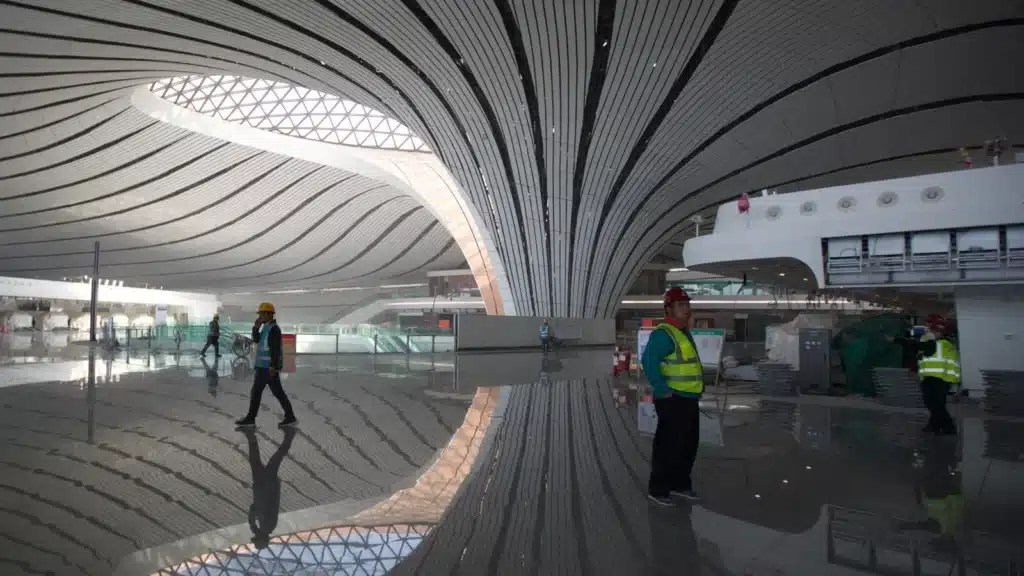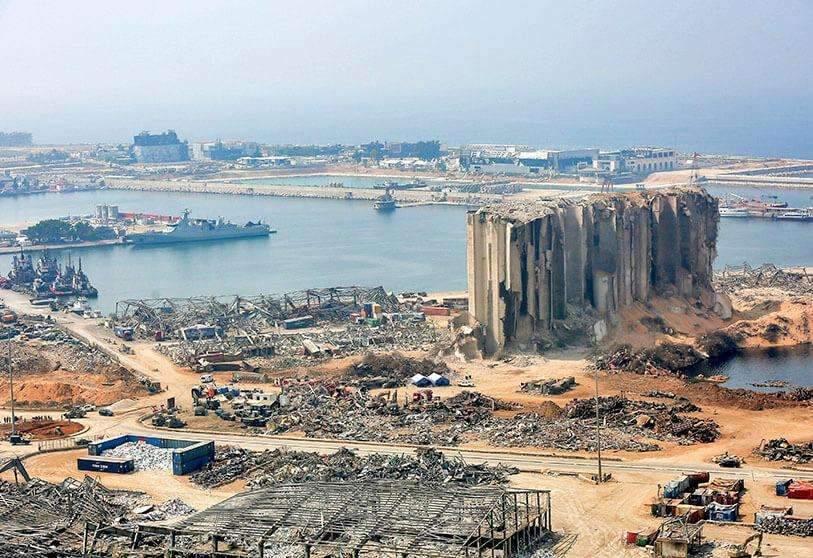Beijing Daxing International Airport ranks as one of the largest architectural projects completed in recent years.It stands out for its innovative design, which integrates advanced engineering techniques with functional details to ensure a seamless and sustainable travel experience. In this article, we will explore the main design features, structural engineering, sustainability strategies, and the airport’s economic and developmental significance. We will also provide a critical analysis through ArchUp’s perspective, along with frequently asked questions and a summary table.

Key Features of the Design
The airport’s design draws inspiration from traditional Chinese architecture, organizing interconnected spaces around a central courtyard. This courtyard serves as a focal point, guiding passengers toward different areas within the terminal, whether for arrivals, departures, or ground transportation.
The domed roof, one of the most prominent design elements, incorporates six structural forms that extend to the ground, providing full support while allowing natural light to illuminate the interior. This technique not only enhances visual aesthetics but also reduces the need for artificial lighting, thereby lowering energy consumption.

Structural Engineering and Advanced Technologies
The airport is one of the largest facilities in the world, spanning over 7.5 million square feet. To achieve this massive scale, engineers utilized a steel grid structure with over 170,000 components. The roof itself covers an area of approximately 350,000 square meters and features C-shaped columns directly connected to the roof for stability.
- Engineering Challenges:
The structural composition was meticulously studied, including load distribution, vertical support system responses, and structural deflection. Engineers considered 420 total load combinations and utilized 38 different cross-sectional sizes for the superstructure. - Future Flexibility:
Structural extensions reaching up to 100 meters allow for the reconfiguration of public spaces in the future, making the airport adaptable to anticipated growth.

Sustainability Strategies
Sustainable design was a core focus during the airport’s development. Several environmental elements were integrated to reduce energy consumption and improve efficiency:
- High-Performance Glass:
Helps minimize heat transfer and improves building insulation. - Natural Ventilation Systems:
Include fresh air inlets and return air ducts, reducing reliance on traditional cooling systems. - Roof Lighting:
Enhances energy performance and provides a more comfortable indoor environment for travelers.
“The integration of sustainable technologies in the airport’s design reflects China’s commitment to green development.”
Source: China’s Ministry of Transport
Economic and Developmental Importance
Located in the Daxing district south of Beijing, the airport is part of a broader strategy to alleviate congestion at the existing capital airport. The project aims to enhance the national transport network and connect Beijing with key cities like Tianjin and Hebei Province.
- Capacity:
At its opening, the airport could accommodate 45 million passengers annually, with expectations to increase to 75 million in the coming years. - Transport Integration:
The airport includes a ground transportation hub offering direct connections to downtown Beijing, boosting regional economic development.

ArchUp’s Perspective: Analysis and Strengths/Weaknesses
Strengths:
- Innovative Technology: The use of advanced engineering techniques has resulted in a flexible design adaptable to future growth.
- Sustainability: A strong focus on reducing energy consumption and incorporating environmental elements demonstrates China’s commitment to sustainable development.
- Ease of Access: The radial design ensures passengers can reach their gates in less than 8 minutes.
Weaknesses:
- High Costs: Building an airport of this scale requires significant investment, which could impact the local economy if expected returns are not achieved.
- Operational Challenges: As passenger numbers grow, managing congestion and ensuring operational efficiency may pose challenges.

Frequently Asked Questions (FAQ)
1. Where is Beijing Daxing International Airport located?
It is located in the Daxing district, south of Beijing.
2. What is the airport’s capacity?
At its opening, the airport accommodated 45 million passengers annually, with projections to increase to 75 million.
3. How is energy consumption reduced at the airport?
Through the use of high-performance glass, natural ventilation systems, and roof lighting.
4. Can the airport be expanded in the future?
Yes, the design allows for reconfiguration to accommodate future growth.
Summary Table
| Title | Details |
|---|---|
| Location | Daxing District, South of Beijing |
| Capacity | 45 million passengers annually at opening, projected to increase to 75 million |
| Design | Inspired by traditional Chinese architecture |
| Sustainability | High-performance glass, natural ventilation, and roof lighting |
| Technology | Steel grid structure with over 170,000 components |
| Economic Importance | Enhances the national transport network and promotes economic development in Tianjin and Hebei |
In this way, Beijing Daxing International Airport clearly demonstrates how developers integrate technology and innovation into large-scale infrastructure projects, focusing on sustainability and future development.





